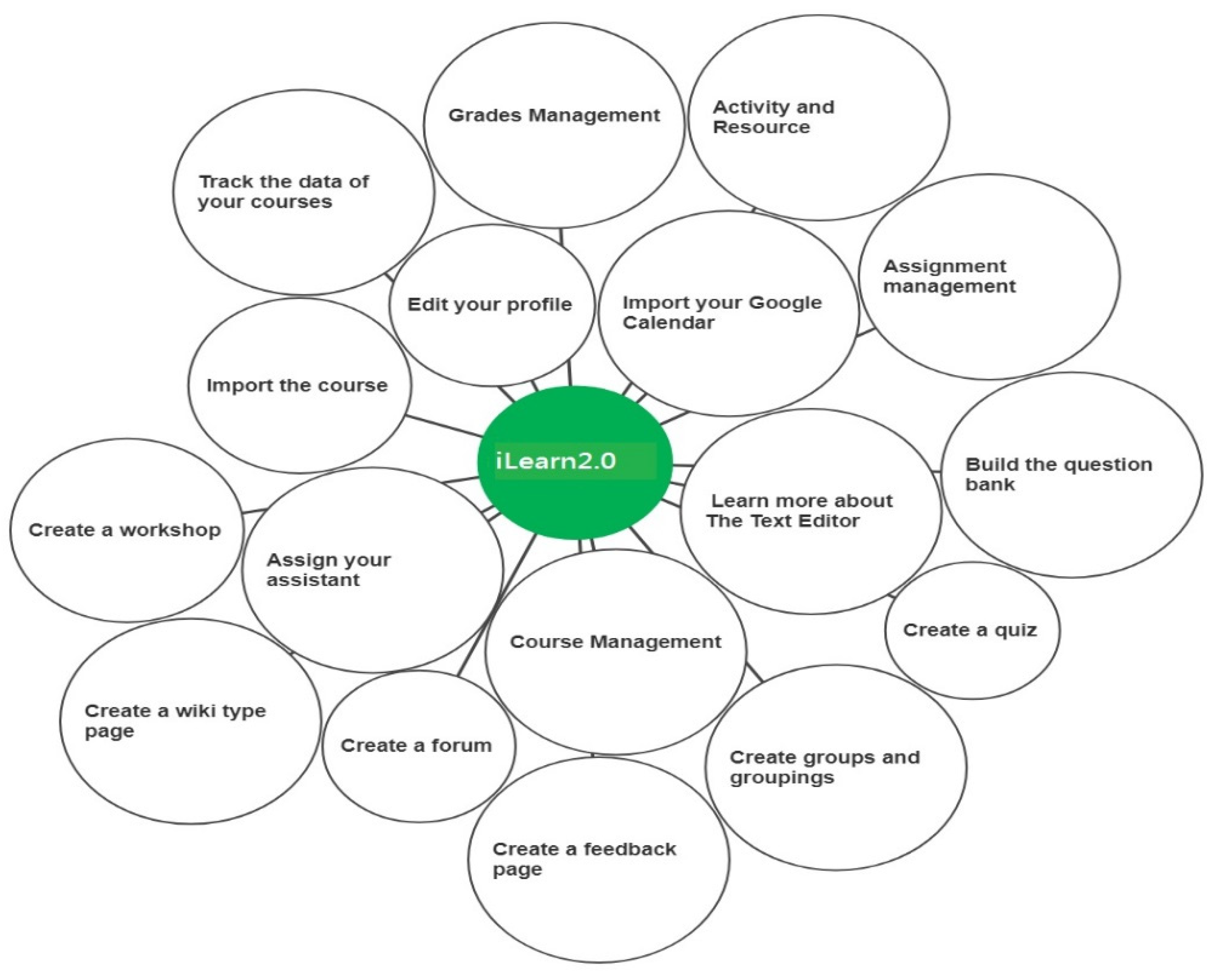E-learning refers to using computer technology in a learning experience that has led to many changes in traditional learning. In the beginning, people who originally studied psychology talked about the use of artificial intelligence (AI) as a teaching assistant but were unable or afraid to implement it. iLearn is an online assistant first launched in 2000. It was used in university courses to integrate technology with education in line with the SLE approach. In 2015, the iLearn system was upgraded and migrated to the iLearn 2.0 version.
1. Introduction
Before 1970, the behavioral school’s programming teaching had to be carried out through a specific machine. Between 1985 and 1995, the emergence of multimedia and hypermedia made the transmission and acquisition of information easier. The teaching environment at this time was affected by cognitive constructivism, which emphasizes the learner’s initiative and interaction in the classroom. The uniqueness of E-learning research is that this type of research often introduces a technological tool that is relatively novel to the learning object
[1].
The other concept that accompanies E-learning is the Internet. From 1995 to 2005, the Internet was popularized, and a teaching environment designed based on the Internet began to emerge, which had a great deal of influence on the construction of computer-aided curricula. The new perspectives of learning emphasized the importance of learning communities, cooperative learning and the authenticity of learning activities or assignments as well as the computer-supported, intentional learning environment, which focused on problem, project, or inquiry-based learning activities
[2]. After 2005, learning entered the era of mobile phones and wireless networks. iPads replaced computers in classrooms by and large; a specific example is a researcher who used smartphones to integrate problem-solving plots and led students to visit museums
[3].
There are many forms of using virtual space as a platform to promote digital learning. Some online platforms used as online professional learning communities include Moodle, Wiki, Blog, Skype, and FB. A number of empirical studies on these platforms have been conducted with a similar research goal, i.e., the use of technology to break through the constraints of geography and time and support the collaborative learning of participating teachers and students in groups
[4][5][6][7][8][9][10].
The changes in E-learning theory can be divided into three stages: the behaviorist/empiricist view as the first stage was represented by the behaviorist school of thought. The second phase, known as the cognitive/empiricist view, was represented by the cognitive school, focused on information processing and cognitive constructivism. The third phase, the situational/pragmatic-pragmatic/socio-historical view, was represented by situational cognitive theory and social constructivism
[11].
Common variables in E-learning research include media and teaching materials, teaching methods and learning methods, and learner characteristics
[4][5][6][7][8][11][12][13][14][15][16][17][18][19][20]. The traditional E-learning model uses book digitization and online platforms to transform traditional classroom learning into an online learning model that can be used to learn online anytime, anywhere. However, this model still uses lecturing, passive participation of users, and top-down content for teaching and learning
[4][21][5][6][7][8][9][10][19][22][23][24][25]. E-learning 2.0, a coined term for collaborative learning through technologies, involves student-centered learning, active learning and participation, collaborative cooperation and discussion, bottom-up learning mode, learning content generated by users, and learning community generated by common learning interests and goals groups
[20].

